Edie Melson's Blog, page 164
May 7, 2021
How Being Grateful Helps Us Be Better Writers

by Beth K. Vogt @BethVogt
I’m sitting down to write this blog post on Wednesday, May 5, which just happens to be my birthday.
I’ve developed a tradition for my birthday: Throughout the day, I take time to count my blessings. I think about all the reasons I have to be grateful—often people come to mind, as well as events from the past year. I’ve found it to be the best way to celebrate my birthday.
Through the years, I’ve also come to realize that gratitude is a vital character-quality for writers.
More than once, I’ve told my husband, “I’m not cut out for this writing gig.” Usually I utter these words when I’m frustrated with my writing or discouraged about my progress or just plain exhausted.
My expectations send my emotions on an unwanted roller coaster ride. I should be achieving more. I should be doing what some other writer is doing. (Comparison trap, I know.) I should have (fill in the blank) books published by now. The best way I’ve found to overcome disappointment and discouragement and yes, to climb out of the comparison trap? Gratitude. Focus on the good. Focus on what you have. Who you have. Starting small is absolutely okay.
Be thankful for:Progress. Any and all progress in our writing. Sometimes forward motion in our writing is slow, uneven, we’re-the-tortoises-and-everyone-else-are-hares kind of progress. It counts.Opportunities. To dream. To brainstorm with writer-friends. To attend conferences, in-person or virtually. To enter contests, even if we don’t final or win. Let’s celebrate taking chances!People. There are the people who “get” us—our writing community. The people who mentor and teach us. The people who support us even though they don’t love the rhythm and rhyme of words like we do. Creativity. We are creatives and that is a special gift … a beautiful opportunity to reflect God to the world. We should start each day thanking God for this. What are you thankful for today?
TWEETABLEHow Being Grateful Helps Us Be Better Writers - @BethVogt on @EdieMelson (Click to Tweet)
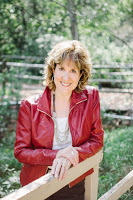 Beth K. Vogt believes God’s best often waits behind the doors marked “Never.” Having authored nine contemporary romance novels and novellas, The Best We’ve Been, the final book in Beth’s Thatcher Sisters Series with Tyndale House Publishers, releasers May 2020. Other books in the women’s fiction series include Things I Never Told You, which won the 2019 AWSA Award for Contemporary Novel of the Year, and Moments We Forget. Beth is a 2016 Christy Award winner, a 2016 ACFW Carol Award winner, and a 2015 RITA® finalist. An established magazine writer and former editor of the leadership magazine for MOPS International, Beth blogs for Learn How to Write a Novel and The Write Conversation and also enjoys speaking to writers group and mentoring other writers. Visit Beth at bethvogt.com.
Beth K. Vogt believes God’s best often waits behind the doors marked “Never.” Having authored nine contemporary romance novels and novellas, The Best We’ve Been, the final book in Beth’s Thatcher Sisters Series with Tyndale House Publishers, releasers May 2020. Other books in the women’s fiction series include Things I Never Told You, which won the 2019 AWSA Award for Contemporary Novel of the Year, and Moments We Forget. Beth is a 2016 Christy Award winner, a 2016 ACFW Carol Award winner, and a 2015 RITA® finalist. An established magazine writer and former editor of the leadership magazine for MOPS International, Beth blogs for Learn How to Write a Novel and The Write Conversation and also enjoys speaking to writers group and mentoring other writers. Visit Beth at bethvogt.com.
May 6, 2021
Using Ensemble Casts to Write Without Preaching

by A.C. Williams @ACW_Author
How do you make a point without being preachy? In your writing, how do you help an audience come to a conclusion without connecting the dots for them? To get an audience to understand your story’s meaning, don’t you have to tell them how to think?
No. Ironically, when you start telling your audience what to think, they’ll shut you out. Readers like to draw their own conclusions about a story and its meaning. They can recognize when an author is communicating with an agenda in mind, and this is true for writers in both the general market and the Christian market.
So how can your story make a difference? Strategies abound, of course, and it varies from author to author, writing coach to writing coach. My personal preferred method is to let your characters do the work.
I’ve found that the most effective way to communicate a point in a story without getting preachy about it is to write using ensemble casts.
An ensemble cast allows a writer to explore the varying perspectives of each character. It allows you to examine a story and its consequences from multiple angles, and based on the events of the plot, it allows your readers to make their own decisions based on which characters they connect with the most.
There may be a more standard definition for an ensemble cast, but in my rule book, it’s a story where the author uses more than two Points of View. A great classic example is The Lord of the Rings books by Tolkien. A more recent example of an ensemble cast novel is Aurora Rising, a space opera by Jay Kristoff and Amie Kaufman. And I might as well throw my own superhero novel into the example pot as well: Ronnie Akkard & The Brotherhood of Blades.
In each of these examples, the authors use multiple Points of View to communicate what’s happening in the story. Every time a new chapter begins, you get a different Point of View, which means you get a different perspective on the action, the plot, and the other characters.
Let’s say that one event takes place, and three different characters are witness it. Depending on each character’s background and personality, they will each have a different response to the same event.
A military officer will respond differently than a civilian. A doctor will respond differently than a teenager. An introvert will respond differently than an extrovert. You get the idea.
So how do you do it? Most new writers I work with start trying to write with ensemble casts because it seems easy, but it’s a lot more difficult than it sounds. Primarily what you need if you want to write an ensemble cast is a deep, certain, thorough understanding of your characters.
You need to know them like real people. Don’t just have a list of their tendencies or a dossier of their history. It’s more than that. You have to understand their motivation. You have to know what makes them tick.
If you try to write an ensemble cast without using Deep Point of View, your audience won’t be able to keep track of whose perspective they’re in.
Every time you switch perspective (I recommend this only at chapter breaks), you shouldn’t need to label the chapter so people know who’s talking. The character’s voice and perspective should be so strong that people automatically know who it is.
Sound impossible? It’s not. It just takes a lot of work, a lot of research, and a lot of time to get to know your characters.
How do you do it? Here are some suggestions:
If you want to write with an ensemble cast, I recommend you write a novel or novella with a single Point of View character first. Get to the place where you can truly use a single Point of View character well. That in itself takes longer than you’d expect.
From there, get some journals. Get one journal for each character you’re going to have a perspective for in your book, and spend a little time getting to know them. Ask your characters interview questions. Once you decide on their background and history, you should be able to form an idea of their voice and their opinions. The more time you spend with them, the stronger their voice will be. The stronger their voice is in the story, the less you will have to fill in the gaps to explain the point you’re trying to make.
Design some scenarios in your mind that will stretch your characters. Put them in impossible situations. How would they respond? What would they do? What would they say? Make notes. Then use that knowledge, that research, as you write your book.
Your clumsy church secretary is going to react very differently to a car crash than your snarky chain-smoking street kid from the Bronx. Use that understanding to your advantage to highlight their different responses. Show the consequences of their actions, and give your readers the space to develop an opinion of their own.
Not only will you get points for not being preachy, but you’ll also end up with memorable characters that your readers will truly enjoy.
TWEETABLE
Using Ensemble Casts to Write Without Preaching - @ACW_Author on @EdieMelson (Click to Tweet)
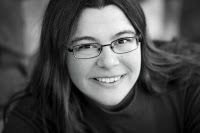 A.C. Williams is a coffee-drinking, sushi-eating, story-telling nerd who loves cats, country living, and all things Japanese. She’d rather be barefoot, and if isn’t, her socks will never match. She likes her road trips with rock music, her superheroes with snark, and her blankets extra fuzzy, but her first love is stories and the authors who are passionate about telling them. Learn more about her book coaching services and follow her adventures on social media @ACW_Author.
A.C. Williams is a coffee-drinking, sushi-eating, story-telling nerd who loves cats, country living, and all things Japanese. She’d rather be barefoot, and if isn’t, her socks will never match. She likes her road trips with rock music, her superheroes with snark, and her blankets extra fuzzy, but her first love is stories and the authors who are passionate about telling them. Learn more about her book coaching services and follow her adventures on social media @ACW_Author.
May 5, 2021
What to Do When Another Writer Offers Help

by Lynn H. Blackburn @LynnHBlackburn
SAY YES!
Have you ever been at a conference or in a writing group and had an author offer to help you in some way? Maybe they offer to look at a few chapters of your manuscript or to let you write for their blog. They may offer to loan you some of their books on writing craft, or to go to lunch with you and talk about your career.
You might be thinking, “I would love that! That would be amazing.” And it would be.
But you know what happens far too often? Nothing. Not because the offers weren’t genuine, but because the writers who received those offers never followed through.
I understand. I’ve been known to say “Thanks, I’m good” when I’m light years away from good. This isn’t because I don’t want or need help. But I’ll still say no. Not outright of course, because that would be rude. But I get all up in my head and never take the next step.
My reasons for deflecting offers of assistance are many and varied, but here are a few I’ve been able to nail down:
1. I don’t want to bother them. This generally involves me deciding for them that they are too busy and/or important to do something for me.
2. I don’t want to look foolish in front of them or others. This, I must confess, is just a nice way of saying “I’m too proud” combined with “I’m incredibly insecure” …. ouch.
3. I don’t think they mean it. Not really. They’re just being nice but are secretly hoping I forget the offer.
4. I don’t want to be needy. Keep in mind, I am needy, and I know it, I just don’t want to be.
5. I don’t want to come across as pushy. Heaven forbid. This one may be mostly temperament and culture, but I can’t bear the thought of someone finding me annoying.
Does any of that resonate with you?
If so, let me tell you that while I still find myself with opportunities to accept help, these days it’s more common for me to be the one in a position to offer help to an aspiring author.
And today, I’m going to let you in on what I’m really thinking when I say “let’s go to lunch” or “send me your first three chapters.”
Maybe this will help you take the plunge and say yes!
1. I am busy. I say no to a lot of things. And I truly can’t help everyone. But, if I’ve offered to do something for you, I’ve taken that into consideration. Will it take time from my already crazy schedule? Yes, it will. And that is time that I believe is worth offering to you. Which is why I did it.
2. I don’t want you to look foolish either. I know you’re nervous about showing me your writing, so if you do share it with me, I consider that an honor. And while it is likely that I will “bleed all over it,” I will do it as nicely as possible. I’m wouldn’t be doing you any favors by going easy on you, but I won’t be mean about it, and I won’t think less of you. I’ll be impressed that you want to do the hard work and learn.
3. I did mean it, and I do hope you’ll take me up on it. I’m generally considered to be a nice person, but I’m at the point in my career where I don’t offer to do anything unless I mean it. (See #1). I’m too busy to throw offers around willy-nilly. If I make an offer, I’ve already counted the cost.
4. Everyone needs help. I can’t think of a published author who got there on their own. Don’t believe me? Grab a book and read the acknowledgements page.
5. I don’t want you to be pushy either. LOL. Pushy is annoying. But taking me up on an offer or even asking if I have time to do something is not being pushy. As long as you’re respectful of my time (especially if I’m on a deadline), we’re going to be just fine.
Bottom line: Don’t be pushy. Don’t be passive.
Lest you think I’m just making all this stuff up, let me assure you, I’ve been there.
I was sitting in a room full of writers when The Write Conversation’s fearless leader, Edie Melson, asked if anyone wanted to write for her blog. I thought I didn’t have anything to offer, but I’ve been offering it up here every month for almost eleven years.
I had an award-winning, bestselling author offer to read my very rough draft, and I told her no. I couldn’t send that mess to her! How embarrassing would that be?! Thankfully, she didn’t let me off the hook. She told me I was making a mistake, and that she could save me a lot of time and trouble. So, I dug deep and sent it.
It worked out great for me. :) I got a mentor and dear friend out of that deal. And six books later, I still send her my crummy first drafts.
So please, the next time an author offers to do something, say yes. You never know where it might lead!Grace and peace,
 TWEETABLEWhat to Do When Another Writer Offers Help - Insight from @LynnHBlackburn on @EdieMelson (Click to Tweet)
TWEETABLEWhat to Do When Another Writer Offers Help - Insight from @LynnHBlackburn on @EdieMelson (Click to Tweet)
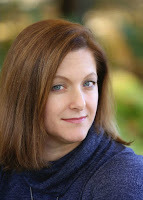 Lynn H. Blackburn loves writing romantic suspense because her childhood fantasy was to become a spy, but her grown-up reality is that she's a huge chicken and would have been caught on her first mission. She prefers to live vicariously through her characters and loves putting them into all kinds of terrifying situations while she's sitting at home safe and sound in her pajamas!
Lynn H. Blackburn loves writing romantic suspense because her childhood fantasy was to become a spy, but her grown-up reality is that she's a huge chicken and would have been caught on her first mission. She prefers to live vicariously through her characters and loves putting them into all kinds of terrifying situations while she's sitting at home safe and sound in her pajamas! Lynn’s titles have won the Carol Award, the Selah Award, and the Faith, Hope, and Love Reader’s Choice Award. Her newest series kicks off in March 2021 with Unknown Threat, Book 1 in the Defend and Protect series.
She is a frequent conference speaker and has taught writers all over the country. Lynn lives in South Carolina with her true love and their three children. You can follow her real life happily ever after by signing up for her newsletter at LYNNHBLACKBURN.COM and @LynnHBlackburn on BOOKBUB, FACEBOOK, TWITTER, PINTEREST, and INSTAGRAM.
May 4, 2021
The Writer's Journey

by Sarah Sally Hamer @SarahSallyHamerAs writers, we often utilize the Hero's Journey to set up our stories, a technique that allows a reader to follow protagonists through their character arcs. But most people don't realize it's really a template for the writing life too.
When we work on a writing project, no matter what that is, we can go through exactly the same progression our characters do, taking a journey of awareness about ourselves. In fact, I believe that writers learn something from each and everything we create which not only makes us better writers but can also make us better people.
The Inciting Incident
Each writer's journey begins with an Inciting Incident, also called a new idea, which takes us out of our Ordinary World. We mull that idea over for a period of time, then we finally start putting words onto paper, which propels us into the Extraordinary World of lessons and trials and new understandings of what we want our readers to take away from our work. What theme do we want them to experience—a sweet love story or a compelling memoir or a how-to book? Any of these will use the same journey.
The Reversal
From the beginning of the task, we've had ideas of what we want to say but it may be difficult to put down on paper. We may wrestle with our own demons, so to speak, as we think and concentrate and think some more. But, finally, we probably will have an "ah-ha" moment, also called the Reversal and the way becomes clear. We're given the answer and know what it is we want to do, and we go forward with conviction.
The journey isn't over yet, though. We still have to write the darned book! But now, we have a new understanding of what we want and the direction we need to go. This part of the journey is usually full of excitement and purpose—almost a race to the finish. But there is still struggle and occasional confusion, even when we're sure of where we're going.
The Breakthrough
The Breakthrough is the last part, and I think the best one, where we take the "step of faith." One of my favorite movies is the third one of the Indiana Jones franchise. Indy is trying to find the Grail—the cup Jesus used in the Last Supper—because his hand has been forced. The bad guy has fatally wounded Indie's father and Indie must find the Grail to save him. The last task is to "take a leap of faith" by stepping forward without knowing what will happen next. Indie pauses here, because he is more of a thinker than a believer, but his instinct tells him to take that step, which leads him to the goal he seeks.
It's the same way with us. When we start our writing journey—or any journey, for that matter—we often don't know what we want or where we're going, we just know we have something to say. It may not be the "greatest novel ever written" but it's our own journey of discovery. So we recognize what we want to do, we learn the lessons and, finally, we take that step of faith.
Sometimes, it doesn't work the way we thought it would. I'm not going to tell you it's always a one-way trip in exactly the right direction. Sometimes, we fall flat on our faces. But the beauty of it is that we still have the opportunity to go on—either on the same journey (learning the same lessons again) or on a new one (with new lessons).
Regardless, we will eventually make the breakthrough we want to make. And our life will never be the same.
TWEETABLE
The Writer's Journey - @SarahSallyHamer on @EdieMelson (Click to Tweet)
 Sarah (Sally) Hamer is a lover of books, a teacher of writers, and a believer in a good story. Most of all, she is eternally fascinated by people and how they 'tick'. She’s passionate about helping people tell their own stories, whether through fiction or through memoir. Writing in many genres - mystery, science fiction, fantasy, romance, medieval history, non-fiction – she has won awards at both local and national levels, including two Golden Heart finals.
Sarah (Sally) Hamer is a lover of books, a teacher of writers, and a believer in a good story. Most of all, she is eternally fascinated by people and how they 'tick'. She’s passionate about helping people tell their own stories, whether through fiction or through memoir. Writing in many genres - mystery, science fiction, fantasy, romance, medieval history, non-fiction – she has won awards at both local and national levels, including two Golden Heart finals.A teacher of memoir, beginning and advanced creative fiction writing, and screenwriting at Louisiana State University in Shreveport for almost twenty years, she also teaches online for Margie Lawson at www.margielawson.com. Sally is a free-lance editor and book coach at Touch Not the Cat Books, with many of her students and clients becoming successful, award-winning authors.
You can find her at hamerse@bellsouth.net or www.sallyhamer.blogspot.com
From Sally: I wish to express gratitude to the giants upon whose shoulders I stand and who taught me so much about the writing craft. I would list every one, if it were only possible.
May 3, 2021
Are You a Fiction Outliner, Plotter, or Plunger

by PeggySue Wells @PeggySueWells
While there is absolutely no right or wrong way to do the craft, those who spend a lot of time writing fiction tend to naturally find themselves in one of three categories with the occasional hybrid.
Outliner
JK Rowling penned an outline for the fifth Harry Potter novel, Order of the Phoenix, on a common piece of notebook paper. Laying the page horizontal, she created a grid with the months of the school year on the left, and the plot points and significant characters listed along the top. When she had filled in the intersecting squares, Rowling knew what needed to happen in each chapter.
While some outliners like the familiar feel of pen and paper when sketching the blueprint for their novel, entering the information on a spreadsheet makes the information easier to edit and add to. Less scratching out and scribbling in the margins. The spreadsheet is perpetually nearby on the computer where you are probably writing, and the contents are quickly available to cut and paste for multiple uses. Add pages to the spreadsheets for pull-out quotes and marketing ideas as they come to mind.
Plotter
Bill Myers, whose books and films sold more than eight million copies and won more than 60 national and international awards, knows where his story will go from beginning to end before he puts words on his manuscript. The author of numerous series for kids, teens, and adults, likes to use the bubble diagram technique. He described writing a seed idea onto a yellow legal pad and circling the idea. From there, Bill created a bubble diagram, listing a variety of what nextpossibilities, followed by another level of potential plot points, and then another and another until he filled the legal pad.
With a highlighter, he went back to the original idea, and marked the best idea in each sequence. With this method, he mapped a story from beginning to end. The writing process involved following the highlighted trail on the legal pad from chapter one until ‘The End.’
Plunger
My tendency is to be a plunger. Chasing Sunrise began as a scene that hung around my thoughts. I wrote the picture, expecting this would be a chapter in the center of the story. In the end, that first scene turned out to be the final chapter. Who knew?!
As a verbal processor, I usually don’t know what I’m thinking until it comes out my mouth. Similarly, sitting at my laptop, Mac(Beth), parts of the story flow as fresh to me as they will be to the reader. Because the scenes do not appear in sequence, I write the parts in my brain. Ideas that show up later frequently reveal information that fills in earlier gaps. “No wonder the bad guy behaves in that way.” When the manuscript is nearly complete, I rearrange chapters as needed for the story to make sense, add transitions, and fill in details.
Estee Zandee is a plunger, but writes her novels sequentially from beginning to end. Taking a break once, she returned to her manuscript to discover “what the bad guy was doing while I was away.” Her natural creative process is more linear.
Hybrids
Some projects organically require an author employ different methods.
Because my novels come together out of sequence, when the story is mostly complete, I reverse engineer an outline. From my work in progress, I list the chapters and events, then rearrange and fill in as needed.
Writing an historical novel gave this natural pantser opportunity to be an outliner. Fitting a story within the historical timeline demands research and precision. A timeline became essential for accuracy, flow, and to avoid perpetual rewrites.
A sampling of the outline looks like this:March 26, 1836 Eli escorts Gabe and the small herd on the first day of Gabe’s 1300 mile journey. Eli returns home in hopes he will hear news of Sam’s fate.March 28, 1836 Gabe quickly realizes driving cattle alone is a tough job.April 1, 1836 Eli and Sam join Gabe on the trail, 15 miles per day for 15 weeks.April 21, 1836 Sam Houston and 800 Texans defeat Santa Anna's Mexican force of 1,500 men at the Battle of San Jacinto, shouting “Remember the Alamo!” Knowing how others create provides helpful tips and how-tos. And like most artistic pursuits, you generally can’t do it wrong. The important part is to grow in your abilities, develop effective systems, and produce excellence.
Writers, like people, have natural styles. Lean into your style without judgement during the writing process. When a project requires a different method for success, you have the ability to learn and add to your craft toolbox.
TWEETABLEAre You a Fiction Outliner, Plotter, or Plunger - @PeggySueWells on @EdieMelson (Click to Tweet)
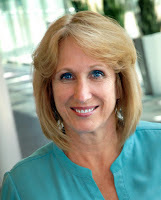 Tropical island votary and history buff, PeggySue Wells parasails, skydives, snorkels, scuba dives, and has taken (but not passed) pilot training. Writing from the 100-Acre wood in Indiana, Wells is the bestselling author of twenty-eight books including The Slave Across the Street, Slavery in the Land of the Free, Bonding With Your Child Through Boundaries, Homeless for the Holidays, and Chasing Sunrise. Optimistic dream-driver, PeggySue is named for the Buddy Holly song with the great drumbeat. At school author visits, she teaches students the secrets to writing, and speaks at events and conferences. Connect with her at www.PeggySueWells.com, on Facebook at PeggySue Wells, and Twitter @PeggySueWells.
Tropical island votary and history buff, PeggySue Wells parasails, skydives, snorkels, scuba dives, and has taken (but not passed) pilot training. Writing from the 100-Acre wood in Indiana, Wells is the bestselling author of twenty-eight books including The Slave Across the Street, Slavery in the Land of the Free, Bonding With Your Child Through Boundaries, Homeless for the Holidays, and Chasing Sunrise. Optimistic dream-driver, PeggySue is named for the Buddy Holly song with the great drumbeat. At school author visits, she teaches students the secrets to writing, and speaks at events and conferences. Connect with her at www.PeggySueWells.com, on Facebook at PeggySue Wells, and Twitter @PeggySueWells.
May 2, 2021
4 Exercises for Writers Inspired by Physical Therapy

By Kristen Hogrefe Parnell @khogrefeparnell
In March, my husband and I went on a ski trip with some friends, which was everything a good time should be—until I crashed on the slopes and dislocated my shoulder. When we returned home, I scheduled the first of many physical therapy sessions to regain full mobility.
As my therapist walked me through an evaluation and showed me several exercises, the writer in me noticed parallels between PT and the writing journey. Even writers can use physical therapy, and the good news is you can start these exercises today—no referral needed.
Exercise 1: Establish a baseline.
As part of my initial evaluation, the therapist compared the strength and flexibility of my recovering right arm to my healthy left arm. She tested how hard I could resist her, how tightly I could squeeze my hand, and various other activities to get a baseline for my treatments.
As writers, we need baselines too. What authors are examples or models for us? We shouldn’t try to be “them” but rather do everything we can to learn from them.
Another baseline to consider is what other books in the genre are similar to ours. In proposals, we call these “comps” and include them in a competitive analysis section. Again, the goal is not to compete with other titles, but to show how our book is similar while also offering something different.
An agent or editor doesn’t want to hear that our idea has “never been done before.” If that’s the case, there’s probably a good reason! Rather, we writers need to look to, and learn from, others to establish our own baseline for success.
Exercise 2: Keep pushing your edge.
Everyone’s pain thresholds are different. Some days after therapy, I thought, “Oh, yeah, I’m a beast at this pain thing.” Other days, I wanted to curl up and cry.
My therapist gave me this advice. “You want to feel some pain. That’s the only way you’re going to stretch further and gain strength. You don’t want to push past your edge but do keep pushing it.”
How do we push our edge as writers? Several ideas come to mind.
Join a writing critique group where you can give and receive constructive feedback. Don’t resist criticism but listen and learn from it. Writing critique partners are your allies. They only have your best interests at heart. I’ve been part of Word Weavers for six years and look forward to my critique group meeting each month.Attend writing conferences, whether virtual or in-person. Sign up for appointments with editors and agents, as many as you can, and invite their feedback. These professionals know the industry and can help you push your edge.Invest in yourself and your manuscript. Each writer is different. Maybe for your project, you hire an outside editor to give you an objective critique. Maybe you invest in marketing courses to learn how to better spread the word about your writing. I realize there is an expense involved, but any serious pursuit will involve an investment of time and money.Remember that your “edge” today will not be your “edge” even a month or year from now. If you are willing to experience discomfort, take criticism, and grow from it, the possibilities are endless.
Exercise 3: Practice, practice, practice.
After my first appointment, the therapist printed off visuals for my homework assignments. I even received my own exercise band. Each day, twice a day, I was to do two sets of each exercise. Hello, soreness, stiffness, and grimacing!
Regardless of the discomfort, I practiced each day, and slowly, my range of motion improved, and the pain diminished.
As writers, we have to be intentional and disciplined in our writing. If we only write when we feel like writing, we’ll never get anywhere. Banish the romantic notion that words should simply gush onto the page. The truth is that good writing is hard work.
Instead, reserve time on your calendar to write. Set a schedule. Impose your own deadlines. Trust me, the practice will serve you well when an editor or agent gives you a deadline!
Some of our initial drafts will be downright awful, but hey, we can edit awful. We can’t edit something that’s never been written.
Exercise 4: Never give up.
As the illustrious Winston Churchill once said, “Never, ever ever ever ever give up!” Although this injury introduced me to a whole new level of pain, I cannot wait for my next chance to click into a pair of skis and get back on the slopes.
No, I’m not one of those crazy adrenaline junkies. Rather, I’m a persistent woman who knows the sport itself isn’t to blame for my injury and that I can still enjoy it, though with a new level of respect.
We writers face our own share of body slams, right? Every writer experiences rejection on some level. Rejection doesn’t mean we should throw in the towel. It just means there’s something for us to learn when we try again.
My therapist says my shoulder will actually be stronger because I took the time to get therapy. How might your writing improve through some of these therapy exercises?
TWEETABLE
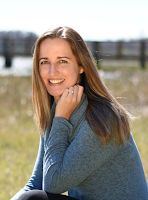 Kristen Hogrefe Parnell writes novels, learns something new every day, and runs for pizza. An educator and mentor, she teaches English online and is an inspirational speaker for schools, churches, and podcasts. Her young adult dystopian novels, The Revisionary and The Reactionary, both won the Selah for speculative fiction, and she recently signed with Mountain Brook Ink for a new romantic suspense series, coming December 2022. Kristen and her husband live in Florida and enjoy sharing their lake home with family and friends. She blogs at KristenHogrefeParnell.com where she challenges readers to find faith in life’s everyday adventures.
Kristen Hogrefe Parnell writes novels, learns something new every day, and runs for pizza. An educator and mentor, she teaches English online and is an inspirational speaker for schools, churches, and podcasts. Her young adult dystopian novels, The Revisionary and The Reactionary, both won the Selah for speculative fiction, and she recently signed with Mountain Brook Ink for a new romantic suspense series, coming December 2022. Kristen and her husband live in Florida and enjoy sharing their lake home with family and friends. She blogs at KristenHogrefeParnell.com where she challenges readers to find faith in life’s everyday adventures.
May 1, 2021
What God Has Made Crooked
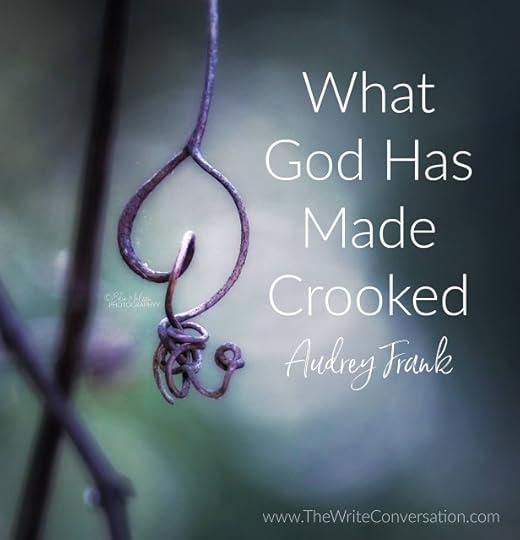
by Audrey Frank @AudreyCFrank
Consider the work of God: who can make straight what he has made crooked? Ecclesiastes 7:13
The twisting, crooked roads of the Atlas Mountains in North Africa don’t allow for speedy driving. Travelers must take it slow. Over the decades, many impatient, hasty drivers have plummeted to their deaths over the steep cliffs.
Driving slowly transforms life-threatening danger into breathtaking vistas of God’s beauty and power. The cautious, careful sojourner is gifted with glory on the journey. She arrives at her destination filled with awe and wonder.
Sometimes God makes our way crooked to slow us down. He has something beautiful to show us. He wants to be seen along the way. He has designed even the crooked ways with beauty.
The writing journey can seem like so many hairpin curves, winding their way along what we had hoped would be a straightforward road to our destination.
We, like the mountain driver, can choose haste or slowness. We can impatiently push ourselves to the limit or slow down and see God.
My first book was published in 2019. I had great plans for the journey. I started with a full tank of gas, as it were, and the book launch was a success. Podcasts, interviews, and book-signing events filled my calendar for months into the future. The road looked fairly straight ahead of me.
Then, less than three months after release day, the road did a sudden 180 turn. My youngest son was critically injured in an accident. My husband and I moved to another city to care for him as he fought for his life in a trauma center.
The road became crooked, and there were times I had to pull over and sit awhile. My destination seemed like some far-off dream. I was consumed with surviving the twists and turns.
Has your road to writing become crooked? Are you sitting on the side of the tarmac, stunned and carsick? It’s okay to sit awhile when we need to.
After a time, the Lord strengthens us, and we get up again. We get back in the car and keep going.
I became a cautious and careful driver. As I cared for my son, I began to see beauty along the way. My book was about people who suffered and how to help them. Now, I was seeing suffering with new eyes. I was learning deep lessons as I navigated this unexpected, crooked way.
The global pandemic has made our way curvy. One day recently I received a phone call from a woman in the Middle East. Because of COVID, the borders of her country were shut. No one could go in and no one could leave. She had a team of Christian workers there who were doing the critical work of trauma healing among those whose lives had been broken by war and loss. She had read my book and wanted her team to have it too. But how to get it to them? Due to security, they could not even download it from Amazon.
I spoke to my publisher and we made an unusual plan that allowed them a private way to receive a digital copy. The team was overjoyed.
The news rippled across the region. Others began reaching out. The book is now making its way beyond borders. It would seem its path is being straightened.
Who can understand the ways of the Lord? Who can know the measure and the design of the path your writing journey needs to take in order to reach the destination He has in mind?
It may mean He makes your way crooked.
Slow down; sit awhile if you need to. But don’t quit. His crooked way is lined with breathtaking beauty.
Lord, lift my head today to see the beauty along this crooked way. Amen.
TWEETABLE
What God Has Made Crooked - @AudreyCFrank on @EdieMelson (Click to Tweet)
 Audrey Frank is an author, speaker, and storyteller. The stories she shares are brave and true. They give voice to those whose words are silenced by shame, the hard things in life that don’t make sense, and the losses that leave us wondering if we will survive. Audrey and her family have spent over twenty years living and working among different cultures and world views, and she has found that God’s story of redemption spans every geography and culture. He is the God of Instead, giving honor instead of shame, gladness instead of mourning, hope instead of despair. Although she has three different degrees in communication and intercultural studies, Audrey’s greatest credential is that she is known and loved by the One who made her.
Audrey Frank is an author, speaker, and storyteller. The stories she shares are brave and true. They give voice to those whose words are silenced by shame, the hard things in life that don’t make sense, and the losses that leave us wondering if we will survive. Audrey and her family have spent over twenty years living and working among different cultures and world views, and she has found that God’s story of redemption spans every geography and culture. He is the God of Instead, giving honor instead of shame, gladness instead of mourning, hope instead of despair. Although she has three different degrees in communication and intercultural studies, Audrey’s greatest credential is that she is known and loved by the One who made her.Audrey is the author of Covered Glory: The Face of Honor and Shame in the Muslim World (Harvest House Publishers), an outpouring of Audrey’s heart to introduce others to the God of Instead. Shame is not unique to the developing world, the plight of the women behind veils, young girls trafficked across borders; shame is lurking in hearts everywhere. Through powerful stories from women around the world, Covered Glory illuminates the power of the Gospel to remove shame, giving honor instead. Available at favorite booksellers: BARNES & NOBLE , BOOKS A MILLION, AMAZON.
April 30, 2021
Why A Writing Group Is Important

by Tim Suddeth @TimSuddeth
One of the best things I did when I decided to become a writer was to look for a tribe. A group of writers where I felt I fit in. I didn’t know of any writers in my family, or among my friends. I’ve always read a lot, including the 1964 World Book Encyclopedia. (My Mom was so proud of it. And it was near the heat register.) And when I taught I enjoyed writing my own Bible studies or course work.
To me, writing for income or for the public was merely a dream. Most of the writers I’d heard of were either dead, preachers or professors, or lived in New York City. (Cue the Pace Picante Sauce commercial.) It sure was something anyone from my community could hope to have any success at.
Then I went to a writers’ group. Cross N Pens to be specific, which is now a part of Word Weavers. There I met people who lived around me and wrote articles that spread God’s message.
And they had found places to send them so people outside their family would read them. Now, that may not sound like a big deal to you, but it was eye-opening to me. I’d accepting that God’s plans were not for me to lead a big church or be a professor. And here I was learning magazines, publishers, and blogs that were looking for the articles I felt led to write.
And when I submitted some pieces to the group for criticism, they didn’t laugh. (Don’t look at me. Isn’t that one of our biggest fears before we’ve shown our work to anyone?)
Here are some general principles we all learn from joining a writing group.
1. Everyone has their own reasons for writing.One of the things I like most about being a writer is that I don’t have limit myself to one medium. You can write devotions, screenplays, novels, how-to books, TV series, all at once. We even see very successful novelists at the tops of their careers write a book in another genre or decide to write for TV.
I met a writer whose goal was to give his grandkids stories to show them biblical lessons in a way they can comprehend. I met writers who wanted to help other women, other moms, go though the struggles they had been led to. Just because they were writing for reasons that didn’t fit me didn’t mean we couldn’t learn from each other.
2. Writing is not a destination, it’s a journey.This is especially true when you feel this is God’s calling to you. There are always new methods to learn and new stories to tell. There are new formats coming out all the time. And as you become efficient in one step, God often uses that to introduce you to someone or something different.
But you have to put yourself out there.
3. Even though writing is a gift, that doesn’t mean there isn’t more to learn.One of the biggest surprises to me about the meetings were how everyone, even the writers we looked up to, were attending the meetings not only to get better, but to help others grow in the profession and craft of writing. I was often the only guy in the group, but I didn’t care. I was with writers. People who understood the desire to express a thought in a way that others would understand and accept. And writers who understood the frustration of not finding the proper word to make a point.
4. There is a writing community waiting for you.Whether you are still seeking how to express your thoughts, already been published in several glossy magazines, or have a couple of novels you’ve had published already sitting on the shelf, there is a group who has a place for you.
I used to love watching the TV show Castle. Here was Castle who was a world-famous mystery author, with thousands of fans everywhere he went. And one of the neatest recurring scenes they did was when he played poker with other famous, household-names, writers. And he didn’t miss it because he needed a place to share his ideas and be challenged to always take that next step.
As a new writer, I was surprised at not only how much I learned form others, but how much I could help them. We all have unique experiences, skill sets, and mindsets. It is by sharing with each other we can more fully look at a situation and find the words that best reaches our reader.
I first challenge you to find a local group that you can attend in person. One of the benefits in attending Blue Ridge Mountains Christian Writers Conference is when you meet other writers from your town or state.
But if finding a local group is impossible where you are or in your circumstances, there are several online groups you can join. ACFW, Word Weavers, and Sisters in Crime have virtual groups you can join where you can have people look at and critique your work.
I know I am missing several. If you are member of a writing group who is still accepting members, please mention it and share the link in the comments.
I want to wish you the best wherever you are in your writing journey. Thank you for stopping by.
TWEETABLEWhy a Writing Group is Important - @TimSuddeth on @EdieMelson (Click to Tweet)
 Tim Suddeth is a stay-at-home dad and butler for his wonderful, adult son with autism. He has written numerous blogs posts, short stories, and three novels waiting for publication. He is a frequent attendee at writers’ conferences, including the Blue Ridge Mountain Christian Writers Conference and a member of Word Weavers and ACFW. He lives near Greenville, SC where he shares a house with a bossy Shorky and three too-curious Persians. You can find him on Facebook, Twitter, or at timingreenville.com.
Tim Suddeth is a stay-at-home dad and butler for his wonderful, adult son with autism. He has written numerous blogs posts, short stories, and three novels waiting for publication. He is a frequent attendee at writers’ conferences, including the Blue Ridge Mountain Christian Writers Conference and a member of Word Weavers and ACFW. He lives near Greenville, SC where he shares a house with a bossy Shorky and three too-curious Persians. You can find him on Facebook, Twitter, or at timingreenville.com.
April 29, 2021
Prayers and Writers: A Perfect Match!
by John Riddle
Prayer has played an important part in my writing career ever since I prayed and asked God to bless me with the gift of creative communication. In my senior year of St. James high school, my family was living in a public housing project in Chester, Pennsylvania. The Vietnam War was still taking place, and I was a few months away from graduation. I didn’t know anything about college scholarships at the time, so I knew I had to pick a career and get ready to do something with my life very soon.
I was sitting at home one evening, watching an episode of The Flying Nun, and at the end of the show when the credits were slowly rolling by, I noticed they had dedicated the episode to a writer. “A writer,” I thought. “Sounds like a noble profession; I think I’d like to be a writer!”
Right then and there I prayed and asked God if he wouldn’t mind blessing me with the gift I needed to become a writer. I didn’t realize it at the time, but He immediately gave me the writing gift. I sat down at an old Royal typewriter and wrote a script for The Flying Nun. It was only seven pages long, but I was very excited at the episode that I had titled, “The New Chapel.”
I took it to school the next day and showed it to my English teacher. I told him I had finally decided what I wanted to do with my life. “I am going to be a writer,” I said, with my head held high. He nodded politely, as he continued grading papers. “I wrote an episode of The Flying Nun. Would you like to read it and tell me what you think?” I asked him.
His was very interested when I mentioned The Flying Nun. (I joke about how we had to watch it as a homework assignment and discuss it in class, since I was attending a Catholic high school.) He said he would read it overnight and give me his honest critique the next day.
The next day was the longest day of my life. Finally, when school was over, I went to his classroom and asked him what he thought about my writing sample. He told me, “This is the worst piece of garbage that I have ever read. Perhaps you should consider a career in manual labor.” I was shocked, and too numb to respond. He continued, “If your writing has no purpose, then there is no purpose in your writing.” Then he left the room.
I’m not sure how long I stood there, but I remember vowing that one day I would see my name on the cover of “many” books (35 as of this writing), and that I would travel the country, encouraging new writers to get published. When I graduated from high school I enlisted in the Navy, and after four years of service I left and began an employment journey that took me through many jobs that I didn’t really like, but I never lost sight of my dream of becoming a full-time author and freelance writer.
My first job was in the mail room at the Dupont Company, in their downtown office headquarters (Wilmington, DE). While I worked with some great people, the job itself was not very challenging, I did have access to their technical library, and that is where I discovered dozens of trade journals. Little did I realize at the time that one day I would be writing for many of those publications as a freelance writer!
Some years later I began working for a few nonprofit agencies as a development director, in charge of fundraising and special events. Of all the jobs I have had, that field was the most rewarding. It allowed me to use my gift of creative communication to write grants and raise money for many worthwhile causes, and I also enjoyed coming up with some “out of the box” special event fundraising ideas. One time I tried to set the Guinness World Record by having the largest number of people dance to the “Twist.” I even recruited Chubby Checker to help us raise money, and that brought lots of media attention.
My dream of working as a writer has come true, and although I was never an “overnight success,” prayer has helped shape my writing efforts over the past 40 years.
TWEETABLEPrayers and Writers: A Perfect Match - John Riddle on @EdieMelson (Click to Tweet)
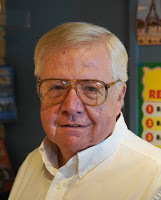 John Riddle is a full time freelance writer, author, ghostwriter and donut eater who works out of his home office in Delaware. His byline has appeared in major publications all across the U.S., and he has written articles for over 300 websites. He is the author of 34 books for a variety of Christian and secular publishers, and recently self published "The Flying Nun, Oprah and Me: 40 Years Making Money as a Freelance Writer (Hey, You Can Do It, Too!)." In 2002 he launched "I Love To Write Day," a grassroots campaign to have people of all ages practice writing every November 15th. His favorite quote is from Walt Disney: "If you can dream it, you can do it!"
John Riddle is a full time freelance writer, author, ghostwriter and donut eater who works out of his home office in Delaware. His byline has appeared in major publications all across the U.S., and he has written articles for over 300 websites. He is the author of 34 books for a variety of Christian and secular publishers, and recently self published "The Flying Nun, Oprah and Me: 40 Years Making Money as a Freelance Writer (Hey, You Can Do It, Too!)." In 2002 he launched "I Love To Write Day," a grassroots campaign to have people of all ages practice writing every November 15th. His favorite quote is from Walt Disney: "If you can dream it, you can do it!"
April 28, 2021
Writing a Journal from your Character’s Perspective
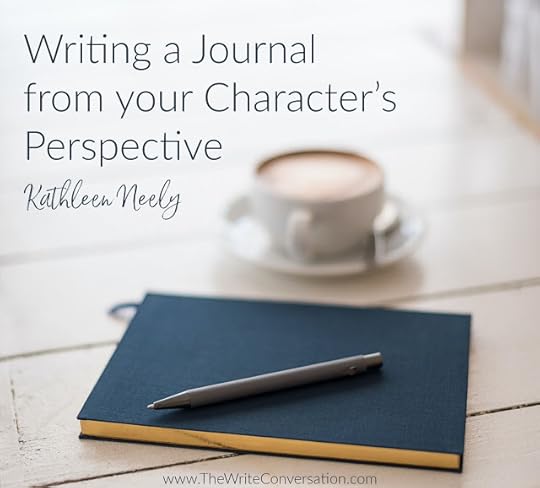
by Kathleen Neely @NeelyKneely3628
I’m sharing tips with you on a strategy that I’ve only just begun using—character journaling. I know—journaling sounds like an age-old tool, but here’s how it differs. It’s not me writing the journal, but my character. I’ve discovered that the input of time is well worth the output. When I sit down and create a journal from my character’s perspective—what he/she is thinking, feeling, wishing, and doing, my writing dips deeper.
Journaling is much more than a keeper of memories. By design, it’s private. Words that only the writer will see. A place to pour out your heart. It’s also quick. A five-to-ten-minute venue where neither spelling nor punctuation matter. It can be a place to vent frustrations, pour out anger, admit weakness. A safe place to dream the impossible dream. In my book Beauty for Ashes Nathan journaled to put words to his guilt, ending each journal entry by incinerating the page into a jar where he collected the ashes of grief.
What do I get out of my character’s rambling? I get the WHY which is the heart of emotions. Characters aren’t one dimensional. Like real-life people, sometimes their actions appear to contradict each other. What causes fear in one chapter may bring excitement in another. WHY? In one scene he’s attracted to her; in another, he’s stand-offish. WHY?
As the keeper of the story, you know the answer. However, if you don’t adequately communicate this to your reader, your story may leave confusion. If you communicate it by telling instead of showing, your reader may stifle a yawn. I find character journaling to be the tipping point for providing that deeper look inside.
Another benefit of character journaling is voice. Language patterns, cultural differences, generational gaps—they come easily when your character does the writing. All you have to do is to maintain that voice in your manuscript. This fall, you will have a chance to meet Charlotte in my time-slip novel Arms of Freedom. Her story is based on her old journals located 150 years later. I hope you enjoy this voice that changed with her coming of age. The journal helped me with layers of emotion that shifted with Charlotte the child, to Charlotte the young lady.
To summarize, journals are: Private – meant only for the character (and you, of course)Quick – minimal time spent Safe – he or she may say anything they’re feeling Real – even you, their creator, will come to know this character on a more intimate level Authentic – a character will make their voice known; it cannot change who they are I’d love to hear from writers with their strategies for character development. It’s the heart of fiction.
TWEETABLEWriting a Journal from Your Character's Perspective - Kathleen Neely, @NeelyKneely3628 on @EdieMelson (Click to Tweet)
Kathleen Neely resides in Greenville, SC with her husband. She is a former teacher and a retired elementary principal. She enjoys time with family, visiting her two grandsons, traveling, and reading.
She is the author of The Street Singer, Beauty for Ashes, The Least of These, and In Search of True North. Kathleen is a blogger for Celebrate Lit and a member of ACFW, American Christian Fiction Writers. She currently serves on the administrative board of the local chapter, ACFW Upstate South Carolina.
Kathleen continues to speak to students about writing and publication processes. She is a member of Association of Christian Fiction Writers.
Website – www.KathleenNeely.com Facebook – www.facebook.com/kathy.neely.98Twitter - https://twitter.com/NeelyKneely3628Instagram – www.Instagram.com/KathleenNeelyAuthor



